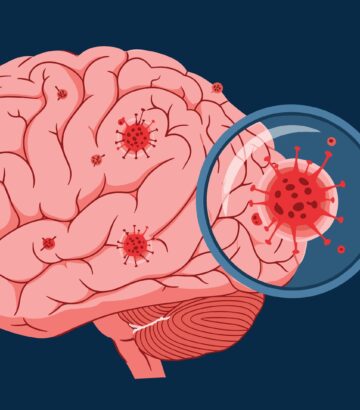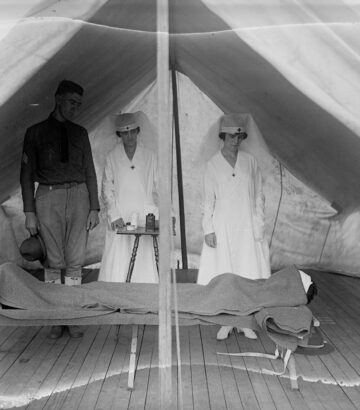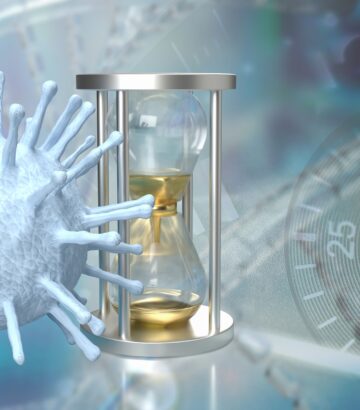The Problem of Long COVID
This is the fourth of a series of posts on Long COVID by David Brasure. See parts 1, 2, 3, 5, 6, 7, and 8.
One of the biggest problems with long Covid is it is just so weird, with so many complex presentations. One person has all these weird clusters of symptoms, and another person comes in to the doctor with another completely different set of symptoms.
Doctors are just not used to that complexity. They are trained for decision trees. Chest pain? Order these tests. Elevated pressure? Prescribe these pills. Long COVID does not play by those rules. It hits different organ systems in different ways, and the damage shifts from patient to patient. Faced with that complexity, some clinicians shrug and doubt. Others want to help but reach blindly: compression stockings, salt, statins.
There is psychology in this too. Many doctors themselves caught COVID and we’re ok. Their families look fine. Their patients keep showing up for work. Outside, people are shopping, traveling, and filling restaurants. It looks normal, so their brains insist it is. That is normalcy bias, and it is incredibly powerful.
But Long COVID has now been with us for six years. For patients, that feels like forever. For science, it is barely an eye blink. On average, new medical knowledge takes about 17 years to move from discovery into clinical practice. Some conditions move faster, but the lag is real. Patients do not have that kind of time.
The Abandoned Diseases
There have always been diseases that medicine turned its back on. Multiple sclerosis was once dismissed as “hysteria” or the invention of anxious women until MRI scans proved the scars in the brain. MCAS was ignored for decades, patients told their flushing and anaphylaxis were “in their heads.” POTS left people fainting and bedridden while doctors wrote referrals to psychiatrists.
Even cancer carried the weight of shame. For much of the twentieth century it was whispered about, hidden, and often psychologized, patients told they must have some unresolved emotional conflict that allowed tumors to grow.
This is a repeating cycle: when medicine cannot explain symptoms, society often fills the gap with psychology, morality, or dismissal. The result is abandonment.
Long COVID is simply the newest entry in this long history. Patients present with fatigue, heart rate spikes, memory problems, organ damage, and still find themselves fighting to be believed. Some are told it is stress, depression, or deconditioning. Others are shuffled from one specialist to another. The pattern is familiar: a condition ahead of the available science becomes a condition abandoned, and patients are left with stigma.
Reality Will Break In
But there is a difference this time: scale. COVID-19 is not rare. It is a global event, with repeating infections across 8 billion people. Governments can talk about “back to normal,” but reality does not negotiate.
The signals are already showing. Disability claims in the UK have surged. In the US, life expectancy ticked upward in 2023 but still has not recovered to 2019 levels. Chronic absenteeism in schools remains far above baseline. Insurance and economic data are flashing red. You cannot gaslight dents this large.
Even conservative prevalence estimates point to millions of Long COVID cases worldwide. Run repeat infections every year across a planet of eight billion people and the reality of Long COVID grows. That is not rare. That is systemic.
It Feels Like Nothing, But Things Are Moving
To patients, it feels like nothing is happening. Every day feels the same. But beneath the surface, progress is happening.
Trials are testing monoclonal antibodies such as Sipavibart, AER002, VYD2311, and Pemgarda, searching for ways to block viral persistence or dampen runaway immune reactions. Repurposed HIV drugs such as maraviroc and tenofovir, found in Truvada, are being studied because they seem to help subsets of Long COVID patients. Other trials are probing statins, antivirals, and immune-modulating drugs. It is messy and uneven, but it is movement.
Amazing New Study That May Change Things
A preprint showing that SARS-CoV-2 binds not to ACE2 as once thought, but first to long sugar strands on human cells, glycosaminoglycans and sialylated glycans. These sugars act like sticky landing pads, pulling the virus in close. Once the virus is drawn in, ACE2 seems to play a role inside the cell, but it is not the initial handshake.
Scientists even identified chemical compounds that can block this sugar binding in cell models. If confirmed, this could open the door to an entirely new class of drugs, ones that stop infection at the very first step, before the virus even gets inside.
Why Hope Is Rational
Research is underway. Some of it makes headlines, much of it does not. Groups like PolyBio are digging into viral persistence, microclots, and tissue-level injury. Japan has an antiviral that is now in phase 3 trials in the US called ensitrelvir. The list goes on.
AI Accelerating Research
Researchers are now using tools like AlphaFold 3, which can predict how proteins, DNA, RNA, and even small drug molecules interact. Other platforms, like DeepMind’s Isomorphic Labs or Insilico Medicine, are using AI to design new compounds from scratch, running millions of possibilities through virtual pipelines before a single pill is ever made. There are AI models that simulate clinical trials, predicting which drugs might succeed or fail before years of costly human testing. That does not replace trials, but it narrows the field and saves time.
We have already seen proof of concept. AI modeling helped speed the design of the original mRNA COVID-19 vaccines and later antivirals like Paxlovid by mapping viral proteins and suggesting druggable sites in record time. What would have taken years of trial and error was compressed into months.
Then there are the technologies aimed straight at the virus itself. The sugar-binding study only happened because of advanced structural biology tools combined with computational modeling. Add in high-throughput screening, robotic systems that can test thousands of drug candidates against these targets in weeks instead of years, and you start to see the scale of change.
In the past, it might have taken decades to move from a discovery like this to a drug. Now, with AI-driven drug design, automated lab platforms, the cycle is compressing.
What Patients Need To Hear
Reality is an unstoppable force. Systems resist, then they break, then they rebuild. It will happen.
Do not give up! Keep pressing your doctors. Demand concrete steps. If one door closes, find another. You are not imagining this. You are not alone. You are part of a long lineage of patients who were doubted until the evidence crushed the denial.
The evidence is piling up again. And reality always pushes back.












